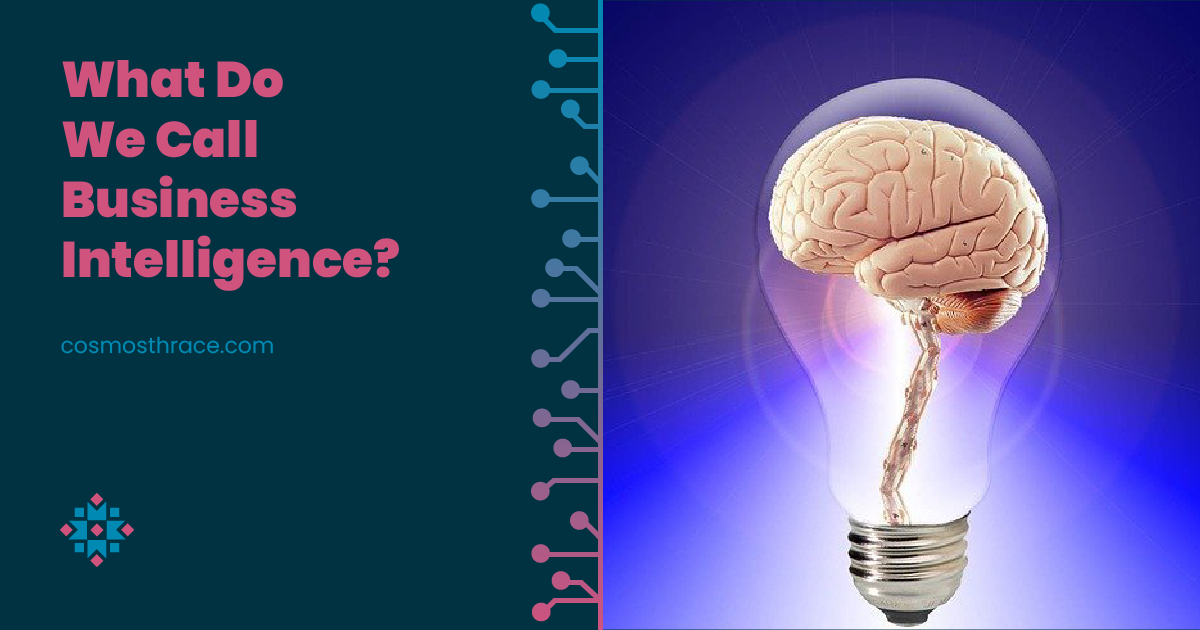Individuals and even businesses have different views of business intelligence (BI). Some claim it has more to do with the visual component, some with the analytical, and yet others with just the attempt to access their data. In fact, the genuine answer to the definition has less to do with technology and more to do with the end goal: how can a company reinvent itself and start making more data-driven decisions? What is the future of business with business intelligence?
Business intelligence is more than a reporting tool or platform. It is a business strategy that allows a company to act and make choices more quickly.
The quantity of various sources from which data is taken is the most common difficulty encountered when it comes to reporting and analyzing data. Depending on the reasoning and source, data may be in a single database, human labor-intensive Excel files, or a more EDW-type platform, resulting in a variety of solutions to the same query. Nothing is more frustrating than entering a meeting with data you believe is right only to discover that someone else has different answers to the same question. So, how can we solve this issue?
Database architecture is just as much an art as a dashboard design.
An entire system can lock up due to a single improper joint between two important tables. If a table has too many columns, it may become useless in the future. The balance between these two parts of business intelligence is more vital to comprehend. No matter how appealing a dashboard appears, it will be ineffective without a solid database architecture. The same can be said for dashboard design in reverse.
While various businesses are at different stages of data reporting maturity, there is a lot that can be done on both the front and back end. Often, an organization will focus its efforts on one side or the other. For example, a firm may have one of the top data warehouses in the industry, but the IT department has locked it down, and all reporting is based on flat data files provided by IT and evaluated in Excel. Another company may have some of the greatest aesthetics and dashboards, but its data approach is still segregated. The ideal situation is for a company to employ a strategy in which IT opens data to analytics teams, who are then enabled to construct powerful visual dashboards with the help of business users. This can only be done when a company first considers the whole operations that stand behind the company.
The most crucial stage in integrating BI in an organization is to assess not only the present architecture but also how people interact with data. A DBA could poll individuals to determine what metrics matter the most to them and what sorts of decisions they are making with the data. All of this data will aid a business intelligence architect in making the best possible selections about the sort of platform that an organization requires.
The next stage in a Business Intelligence journey is to learn more about the types of platforms that might be used inside a company.
When it comes to Business Intelligence, each firm will have specific, “tailored-made” requirements. Some businesses are heavily data-driven and just want assistance in integrating the entire platform with a powerful visualization tool. Some people have no notion of what to do with their data and are working on a tight budget. Then the large corporations are always seeking to innovate and position themselves above their competitors. For each sort of requirement, there are multiple tactics and platforms. We love to deliver custom data solutions so check out our services page.
Therefore, there are some products, such as Birst or Qlik, that advertise themselves as a one-stop-shop for all things BI. These platforms might cover all the elements of a robust Business Intelligence strategy (also known as “Plug-and-Play”), from data warehousing to data modeling and visualization. In reality, these platforms are designed to be highly sticky within a business and attempting to develop outside of the platform can be rigid. This may be beneficial to a smaller firm since it helps them to streamline their data management and focus on growing their business. It might also work for a corporation with several data sources for different divisions, and the platform is utilized as a data aggregation tool for executive reporting.
To conclude, business intelligence is not just a collection of tools and dashboards. It is more of a platform but also a strategy. One that enables an organization to shift from reactive decision-making based on a descriptive tale to proactive decision-making based on data-driven analytics. Decisions that give the decision-maker confidence in the outcomes they are observing and seeking. This approach is unique to each company, and it must be determined not by creating criteria and comparing tools to what they can achieve, but by looking at the company as a whole and committing to a fundamental change in how business users interact with data.


